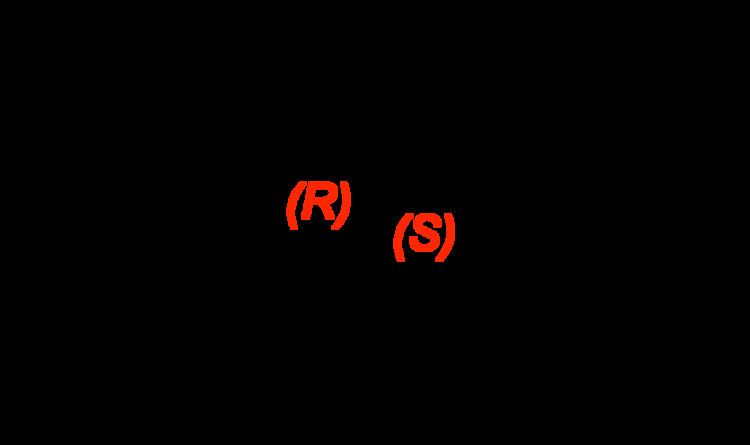Pronunciation succimer /ˈsʌksᵻmər/ AHFS/Drugs.com Monograph Formula C4H6O4S2 Melting point 125 °C | Trade names Chemet, others ATC code V03AB (WHO) Molar mass 182.22 g/mol CAS ID 304-55-2 | |
 | ||
Pregnancy
category US: C (Risk not ruled out) Synonyms (2R,3S)-2,3-Dimercaptosuccinic acid (no longer recommended)
meso-2,3-Dimercaptosuccinic acid
Succimer
APRD01236 IUPAC ID meso-2,3-dimercaptosuccinic acid | ||
Dmsa scan note the left kidney hypo functioning dimercaptosuccinic acid
Dimercaptosuccinic acid (DMSA), also called succimer, is a medication used to treat lead, mercury, and arsenic poisoning. When radiolabeled with technetium-99m, it is used in a number of types of diagnostic testing. It is taken by mouth for 19 days. More than two weeks should pass before a second course is given.
Contents
- Dmsa scan note the left kidney hypo functioning dimercaptosuccinic acid
- Medical uses
- Chemistry
- Preparation and reactivity
- History
- References
Common side effects include vomiting, diarrhea, rash, and low blood neutrophil levels. Liver problems and allergic reactions may also occur with use. It is unclear if use during pregnancy is safe for the baby. Dimercaptosuccinic acid is in the chelating agent family of medications. It works by binding with lead and a number of other heavy metals allowing them to leave the body in the urine.
Dimercaptosuccinic acid has been used medically since the 1950s. It is on the World Health Organization's List of Essential Medicines, the most effective and safe medicines needed in a health system. In the United States there was no generic version available as of 2015. A course of treatment costs more than US$200 (about $6.63 per 100 mg pill). In India, it costs about $1.24 per 100 mg pill.
Medical uses
Dimercaptosuccinic acid is indicated for the treatment of lead poisoning in children with blood level measured above 45 µg/dL. The use of DMSA is not approved for prevention of lead poisoning in anticipation of exposure in known lead contaminated environments. Its elimination half-life is 2.5–3.5 hours. DMSA can cross the blood–brain barrier of mice, but not that of humans, limiting its use to extracting heavy metals from parts of the body other than the central nervous system.
DMSA facilitates urinary excretion of lead, and with sufficiently aggressive treatment, can reduce lead content in the brain. DMSA also increases urinary excretion of copper and zinc. DMSA improved cognitive function in rats that had been exposed to lead, but reduced cognitive function in rats that had not been exposed to lead.
The relative activities of a series of novel monoalkyl esters of meso-2,3-dimercaptosuccinic acid (MiADMSA) have been examined as agents for the mobilization of cadmium, lead and arsenic owing to the ability of these monoesters to cross cell membranes. The monoesters were found to be more effective than the parent compound DMSA. The complexes (monoesters of DMSA) seem to penetrate cells (not possible in the case of DMSA), which helps in targeting intracellular sites in the body and aids in the removal of toxic metal ions in the cytosol and organelles inside the cell.
Chemistry
It is the organosulfur compound with the formula HO2CCH(SH)CH(SH)CO2H. This colorless solid contains two carboxylic acid and two thiol groups, the latter being responsible for its mildly unpleasant odour. It occurs in two diastereomers, meso and the chiral dl forms.
The 2,3-dimercaptosuccinic acid molecule has two stereocentres (two asymmetric carbons), and can exist as three different stereoisomers. The 2S,3S and 2R,3R isomers are a pair of enantiomers, whereas the 2R,3S isomer is a meso compound and thus optically inactive.
Preparation and reactivity
DMSA may be prepared by reacting acetylenedicarboxylic acid with sodium thiosulfate or thioacetic acid followed by hydrolysis. The dimethyl ester is also known.
Meso 2,3-dimercaptosuccinic acid binds to "soft" heavy metals such as Hg2+ and Pb2+, mobilizing these ions for excretion. It binds to metal cations through the thiol groups, which ionize upon complexation.
History
DMSA was first synthesized by V. Nirenburg in the Urals Polytechnic Institute, commissioned by one of the electrical enterprises of Sverdlovsk, which consumed many tons of mercury and was looking for a medicine to prevent poisoning of personnel. In 1957, it was found by Chinese scientists that DMSA can effectively treat antimony poisoning due to overdose of tartar emetic. Pronounced protective effect in animal poisoning with arsenic and mercury was first shown by I. Okonishnikova in 1962. In 1984 the now-defunct Bock Pharmaceutical Company requested the FDA grant approval for Orphan drug status under the trade name Chemet and the FDA approved of this in 1991 providing exclusivity until 1998 which was conveyed to the successor Sanofi in 1996.
